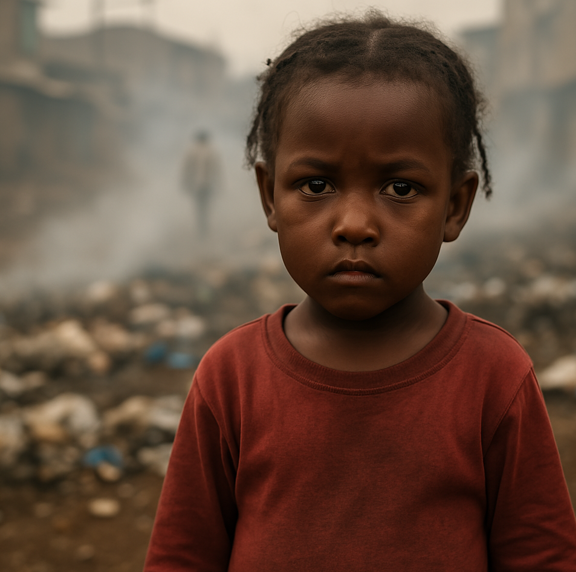
A new study has revealed that toxic air pollution in East Africa is severely harming children's health and development.
The report, which synthesises findings from 34 scientific publications across eight countries, states that millions of children are growing up in environments where the air they breathe is slowly damaging their bodies and minds.
The particular countries targeted are Burundi, DRC, Ethiopia, Kenya, Rwanda, South Sudan, Tanzania, and Uganda.
According to the report by the Health Effects Institute (HEI), children in this region are routinely exposed to polluted air from household cooking fires, industrial emissions, and congested urban areas.
"Children are more susceptible to the impacts of air pollution exposure compared to adults," it states.
"They face special risks from air pollution because they often inhale more polluted air in relation to their body weight than adults."
The polluted air, it adds, affects their health as their immune systems and lungs, brains, and other organs are still developing.
While the general health impacts of air pollution are well known, this new analysis highlights its especially severe effects on children—many of which begin even before school age.
Children, it says, are particularly vulnerable to air pollution because they inhale more air relative to their body weight and have developing lungs, brains, and immune systems.
Studies in Kenya, Uganda, and Ethiopia have shown that exposure to pollutants like PM2.5 and PM10 is linked to reduced lung function, increased risk of acute respiratory infections (ARIs), and even cognitive development delays in children aged 3-4 years.
PM stands for particulate matter, referring to a mixture of tiny solid particles and liquid droplets found in the air. These particles can vary in size, composition, and origin, and they're often a key component of air pollution.
PM can cause or worsen respiratory and cardiovascular problems.
PM10 are particles with diameters 10 micrometers or smaller like dust, pollen or mold while PM2.5 are fine particles with diameters 2.5 micrometers or smaller basically from vehicle exhaust, industrial emissions, burning of wood or fossil fuels.
These can penetrate deep into the lungs and even enter the bloodstream.
In Machakos County, for instance, the research found that children exposed to higher levels of PM2.5 showed significantly reduced lung capacity.
These are children aged between 9-14 years.
"Seasonal variations in lung function were also reported, with higher exposures during the wet season," it further reads.
In Uganda, household exposure to biomass smoke correlated with diminished lung function.
Broader survey data revealed that PM2.5 exposure was linked to higher rates of anemia and lower hemoglobin levels in children.
But the crisis is not limited to homes.
In Tanzania, fish vendors—many of them mothers—cook over biomass fires in markets where PM2.5 levels spike above 700 µg/m³, vastly exceeding safe limits.
Among these workers, chronic obstructive pulmonary disease (COPD) was found in 32 per cent, and symptoms like coughing, wheezing, and breathlessness were common.
Solid fuels remain the dominant cooking method for most households in the region, trapping children in a daily cycle of exposure.
With air pollution now the second leading cause of death in East Africa, its toll on child health signals a looming public health catastrophe.
According to the report, currently, air pollution is currently the second leading cause of death in the region, accounting for 294,000 deaths in 2021.
The review was motivated by deliberations at a scoping workshop in March 2023.
Workshop participants acknowledged the need to expand
the range of health studies measuring the effects of long-term exposure to air pollution in the region.
Air pollution is a complex mixture of particles and gases that vary in composition and origin over space and time.
While hundreds of chemical compounds can be measured in the air, governments typically measure only a small subset of pollutants that have well-established health or ecosystem impacts and are indicators of different types of air pollution and major sources contributing to that pollution.
Sources of air pollution vary across East Africa, with large contributions from household solid fuel use, dust storms, and forest or savannah fires.









